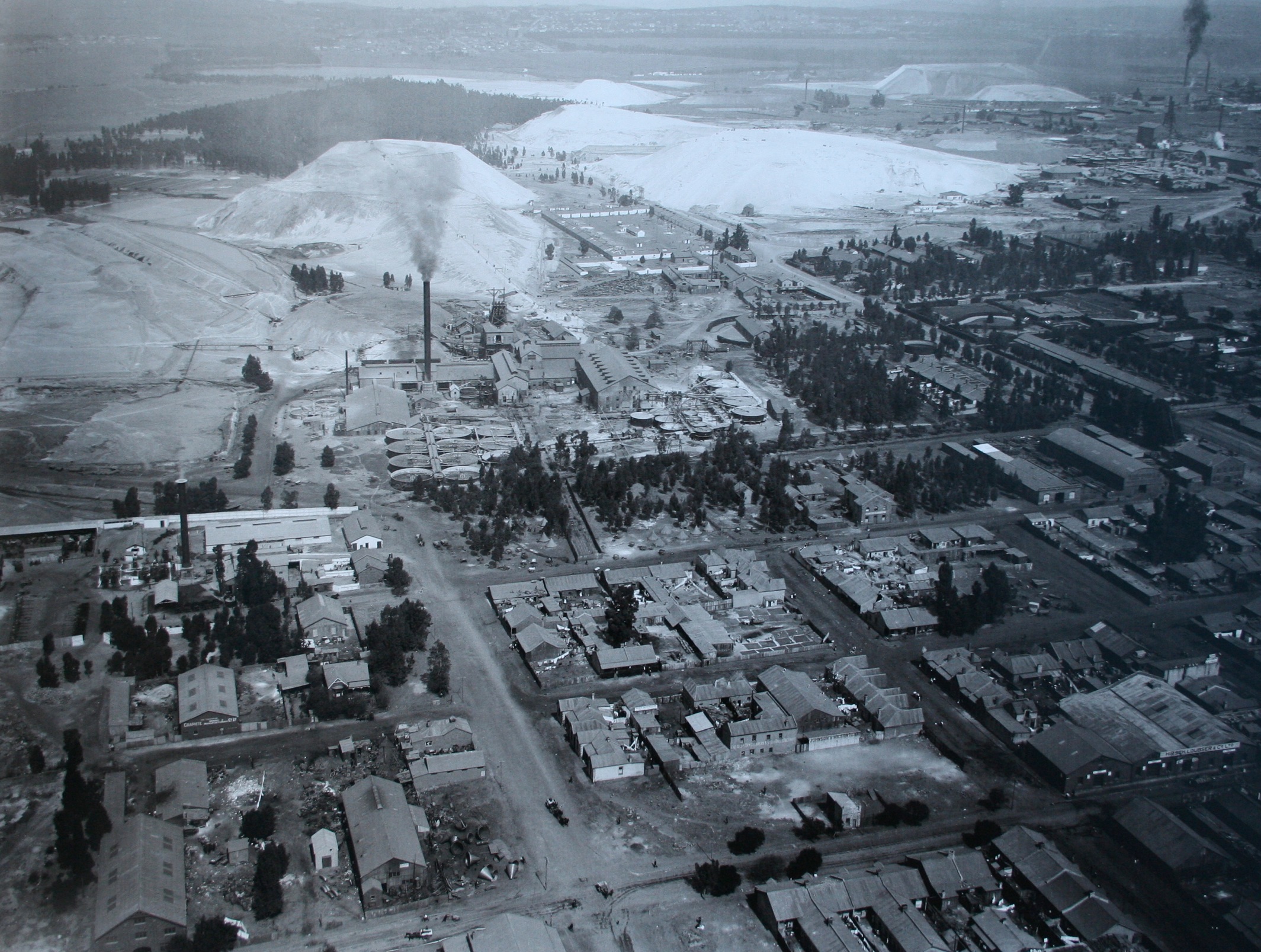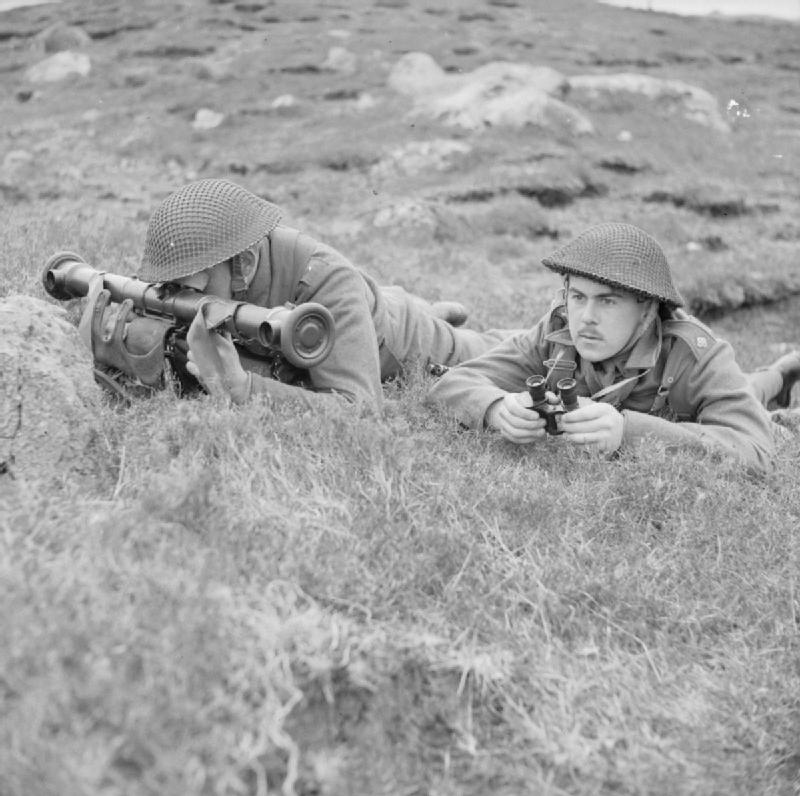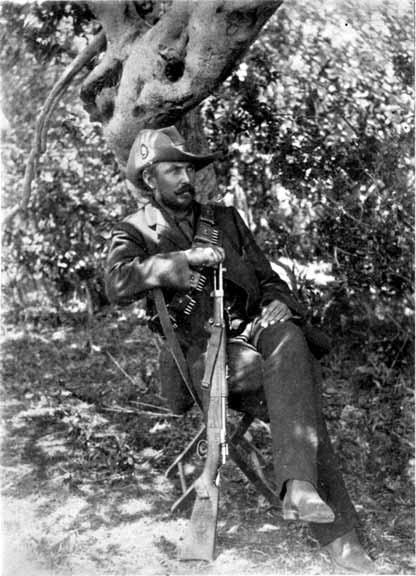|
National Scouts
The ''National Scouts'' were a military unit in South Africa created by the British authorities in 1900 during the Second Boer War (11 October 1899 – 31 May 1902). Its membership consisted of former Boer people, Boer Orange Free State and South African Republic military. They were recruited in significant numbers towards the end of the war from Afrikaner prisoners and defectors, and were commonly known as ''hensoppers'' (Afrikaans language, Afrikaans for ''Hands-uppers'') or ''joiners'' among the Boers. Many of their fellow citizens despised them as traitors so that the label of National Scout became a swear word. According to official figures there were 1,480 members in May 1902. After the war, they were largely ostracized by the community and a number of them founded their own church, known as the Kruiskerk (Church of the Cross) in the Transvaal Colony. Second Boer War A few months after the occupation of Pretoria by the British forces on 5 June 1900, a first public meeting w ... [...More Info...] [...Related Items...] OR: [Wikipedia] [Google] [Baidu] |
Transvaal Colony
The Transvaal Colony () was the name used to refer to the Transvaal region during the period of direct British rule and military occupation between the end of the Second Boer War in 1902 when the South African Republic was dissolved, and the establishment of the Union of South Africa in 1910. The borders of the Transvaal Colony were larger than the defeated South African Republic (which had existed from 1856 to 1902). In 1910 the entire territory became the Transvaal Province of the Union of South Africa. History Both the Boer republics, the South African Republic (ZAR) and the Orange Free State were defeated in the Anglo-Boer War and surrendered to the UK. The peace treaty (Treaty of Vereeniging) contained the following terms: # That all burghers of the ZAR and Orange Free State lay down their arms and accept King Edward VII as their sovereign. # That all burghers outside the borders of the ZAR and Orange Free State, upon declaring their allegiance to the King, be transpo ... [...More Info...] [...Related Items...] OR: [Wikipedia] [Google] [Baidu] |
Weidenfeld & Nicolson
Weidenfeld & Nicolson Ltd (established 1949), often shortened to W&N or Weidenfeld, is a British publisher of fiction and reference books. It has been a division of the French-owned Orion Publishing Group since 1991. History George Weidenfeld and Nigel Nicolson founded Weidenfeld & Nicolson in 1949 with a reception at Brown's Hotel, London. Among many other significant books, it published Vladimir Nabokov's ''Lolita'' (1959) and Nicolson's ''Portrait of a Marriage'' (1973), a frank biography of his mother Vita Sackville-West and father Harold Nicolson. In its early years Weidenfeld also published nonfiction works by Isaiah Berlin, Hugh Trevor-Roper, and Rose Macaulay, and novels by Mary McCarthy and Saul Bellow. Later it published titles by world leaders and historians, along with contemporary fiction and glossy illustrated books. Weidenfeld & Nicolson acquired the publisher Arthur Baker Ltd in 1959, and ran it as an imprint into the 1990s. Weidenfeld was one of Orion's first a ... [...More Info...] [...Related Items...] OR: [Wikipedia] [Google] [Baidu] |
History Of South Africa
The first modern humans are believed to have inhabited South Africa more than 100,000 years ago. South Africa's prehistory has been divided into two phases based on broad patterns of technology namely the Stone Age and Iron Age. After the discovery of hominins at Taung and australopithecine fossils in limestone caves at Sterkfontein, Swartkrans, and Kromdraai these areas were collectively designated a World Heritage site. The first nations of South Africa are collectively referred to as the Khoisan, the Khoi Khoi and the San separately. These groups were displaced or sometimes absorbed by migrating Africans (Bantus) during the Bantu expansion from Western and Central Africa. While some maintained separateness, others were grouped into a category known as Coloureds, a multiracial ethnic group which includes people with shared ancestry from two or more of these groups: Khoisan, Bantu, English, Afrikaners, Austronesians, East Asians and South Asians. European exploration of ... [...More Info...] [...Related Items...] OR: [Wikipedia] [Google] [Baidu] |
Lovat Scouts
The Lovat Scouts was a British Army unit first formed during the Second Boer War as a Scottish Highland yeomanry regiment of the British Army. They were the first known military unit to wear a ghillie suit and in 1916 formally became the British Army's first sniper unit, then known as "sharpshooters". It served in the First World War and then Second World War. History Formation and early history The regiment was formed in January 1900 for service in the Second Boer War by Simon Fraser, 14th Lord Lovat as the Lovat Scouts.Frederick, pp. 42–3. Recruited initially from gamekeepers on Highland estates, the unit was commanded by the Hon. Andrew David Murray from his appointment by Lord Lovat in February 1900 until killed in action September 1901. After his death Lord Lovat, who had hitherto served as second-in-command of the regiment, took command himself (now aged 29), and remained in command till the end of the war. Well practiced in the arts of marksmanship, fieldcraft and milita ... [...More Info...] [...Related Items...] OR: [Wikipedia] [Google] [Baidu] |
Johanna Brandt
Johanna Brandt (18 November 1876 in Heidelberg, Gauteng, Heidelberg, South African Republic – 13 January 1964 in Newlands, Cape Town) was a South African propagandist of Afrikaners, Afrikaner nationalism, spy during the Boer War, prophet and writer on controversial health subjects. Biography Johanna van Warmelo was born on 18 November 1876, to Pastor Nicolaas Jacobus van Warmelo and his second wife Maria Magdalena Elizabeth Maré. Her father was a Dutch Reformed minister from the Netherlands whilst her mother's family had been early emigrants to southern Africa.Modernity and Religion William Nicholls, p72, Papers presented at the Consultation on Modernity and Religion held at ... [...More Info...] [...Related Items...] OR: [Wikipedia] [Google] [Baidu] |
Louis Botha
Louis Botha (; 27 September 1862 – 27 August 1919) was a South African politician who was the first prime minister of the Union of South Africa – the forerunner of the modern South African state. A Boer war hero during the Second Boer War, he eventually fought to have South Africa become a British Dominion. Early life Louis Botha was born in Greytown, Natal one of 13 children born to Louis Botha Senior (26 March 1827 – 5 July 1883) and Salomina Adriana van Rooyen (31 March 1829 – 9 January 1886). He briefly attended the school at Hermannsburg before his family relocated to the Orange Free State. The name Louis runs throughout the family, with every generation since General Louis Botha having the eldest son named Louis. Botha had a younger brother Chris (1864-1902), who was a police officer and like Louis a military commander in the Second Boer War. Zulu conflict Louis Botha led "Dinuzulu's Volunteers", a group of Boers that had supported Dinuzulu against Zibhebhu i ... [...More Info...] [...Related Items...] OR: [Wikipedia] [Google] [Baidu] |
Bittereinder
The ''Bittereinders'' () or irreconcilables were a faction of Boer guerrilla fighters, resisting the forces of the British Empire in the later stages of the Second Boer War (1899–1902). By September 1900, the conventional forces of the South African Republic and the Orange Free State had been largely defeated by the British army. The remnants of Boer government resolved to fight on in a guerrilla war, to try to force the British to retreat from the territory. As it became clear that military victory was unlikely, opinion among the guerrillas divided between those who wanted to secure a negotiated peace and those who preferred to fight on to "the bitter end" ( af, bitter eind). The decision to continue the fight was given particular motivation by the British use of concentration camps to intern captured Boers. Taken more generally, it could be used as another name for a "war party" (a faction within a political or military group favouring the waging of war) or for any grou ... [...More Info...] [...Related Items...] OR: [Wikipedia] [Google] [Baidu] |
Queen's South Africa Medal
The Queen's South Africa Medal is a British campaign medal awarded to British and Colonial military personnel, and to civilians employed in an official capacity, who served in the Second Boer War in South Africa. Altogether twenty-six clasps were awarded, to indicate participation in particular actions and campaigns. Institution The Queen's South Africa Medal was instituted by Queen Victoria in 1900, for award to military personnel and civilian officials who served in South Africa during the Second Boer War from 11 October 1899 to 31 May 1902.The Queen's South Africa Medal 1899 - 1902 Retrieved March 13, 2015. Three versions of the medal are known. Since the war was initially expected to be of short duration and to reach its conclusion in 1900, the first medals were struck w ... [...More Info...] [...Related Items...] OR: [Wikipedia] [Google] [Baidu] |
Hell
In religion and folklore, hell is a location in the afterlife in which evil souls are subjected to punitive suffering, most often through torture, as eternal punishment after death. Religions with a linear divine history often depict hells as eternal destinations, the biggest examples of which are Christianity and Islam, whereas religions with reincarnation usually depict a hell as an intermediary period between incarnations, as is the case in the dharmic religions. Religions typically locate hell in another dimension or under Earth's surface. Other afterlife destinations include heaven, paradise, purgatory, limbo, and the underworld. Other religions, which do not conceive of the afterlife as a place of punishment or reward, merely describe an abode of the dead, the grave, a neutral place that is located under the surface of Earth (for example, see Kur, Hades, and Sheol). Such places are sometimes equated with the English word ''hell'', though a more correct translatio ... [...More Info...] [...Related Items...] OR: [Wikipedia] [Google] [Baidu] |
Piet De Wet
Pieter Daniël de Wet (18 August 1861 – 27 February 1929) was a Boer general in the Anglo-Boer War (1899–1902) and a younger brother of Boer general and politician Christiaan de Wet. Piet de Wet participated in the Battle of Poplar Grove (7 March 1900), the Battle of Sanna's Post (Sannaspos, 31 March 1900) for the waterworks there, and defeated the 13th Battalion Imperial Yeomanry at Lindley (31 May 1900). In July 1900, he surrendered to the British at Kroonstad, Orange Free State. He became a prominent member of the National Scouts helping the British in the last years of the Boer War. Early career De Wet was born at the farm Nuwejaarsfontein in Dewetsdorp as one of the fourteen children of Jacobus Ignatius de Wet (13 July 1823, Boonjieskraal, Caledon, Western Cape – 1891, Dewetsdorp) and Aletta Susanna Margaretha Strydom (28 February 1828, Caledon – 16 May 1870, Dewetsdorp). With his older brother Christiaan he left the Orange Free State in 1879 for the Heidel ... [...More Info...] [...Related Items...] OR: [Wikipedia] [Google] [Baidu] |
Saint Helena
Saint Helena () is a British overseas territory located in the South Atlantic Ocean. It is a remote volcanic tropical island west of the coast of south-western Africa, and east of Rio de Janeiro in South America. It is one of three constituent parts of the British Overseas Territory of Saint Helena, Ascension and Tristan da Cunha. Saint Helena measures about and has a population of 4,439 per the 2021 census. It was named after Helena, mother of Constantine I. It is one of the most remote islands in the world and was uninhabited when discovered by the Portuguese enroute to the Indian subcontinent in 1502. For about four centuries the island was an important stopover for ships from Europe to Asia and back, while sailing around the African continent, until the opening of the Suez canal. St Helena is the United Kingdom's second-oldest overseas territory after Bermuda. Saint Helena is known for being the site of Napoleon's second exile, following his final defeat in 1815. ... [...More Info...] [...Related Items...] OR: [Wikipedia] [Google] [Baidu] |








